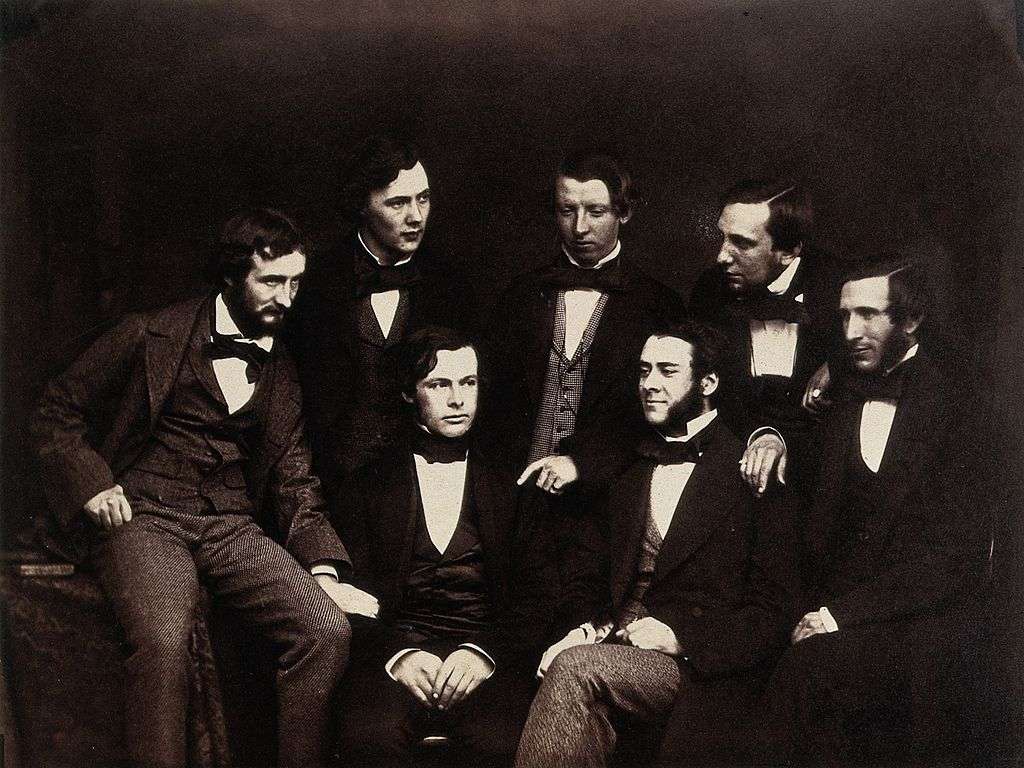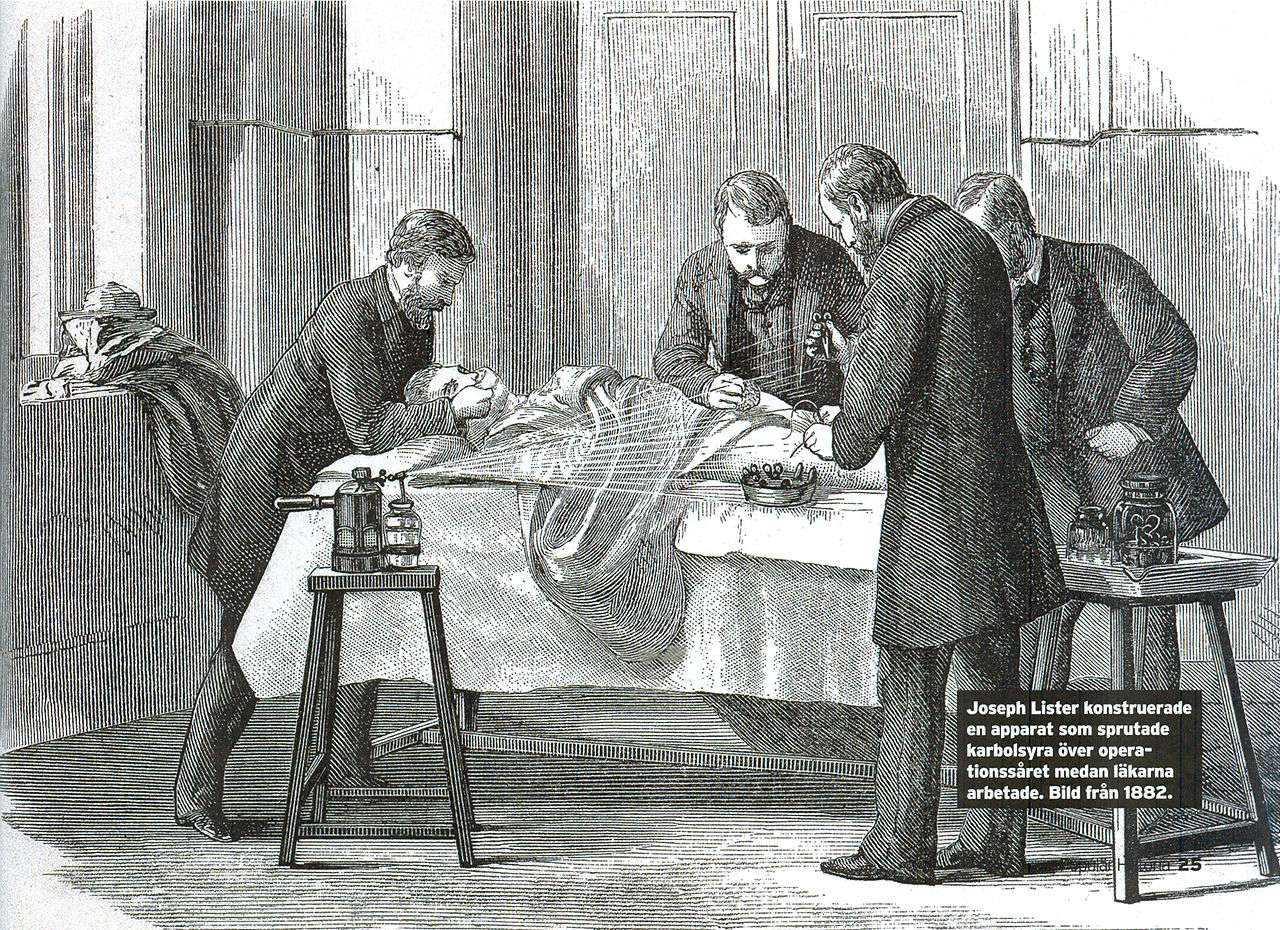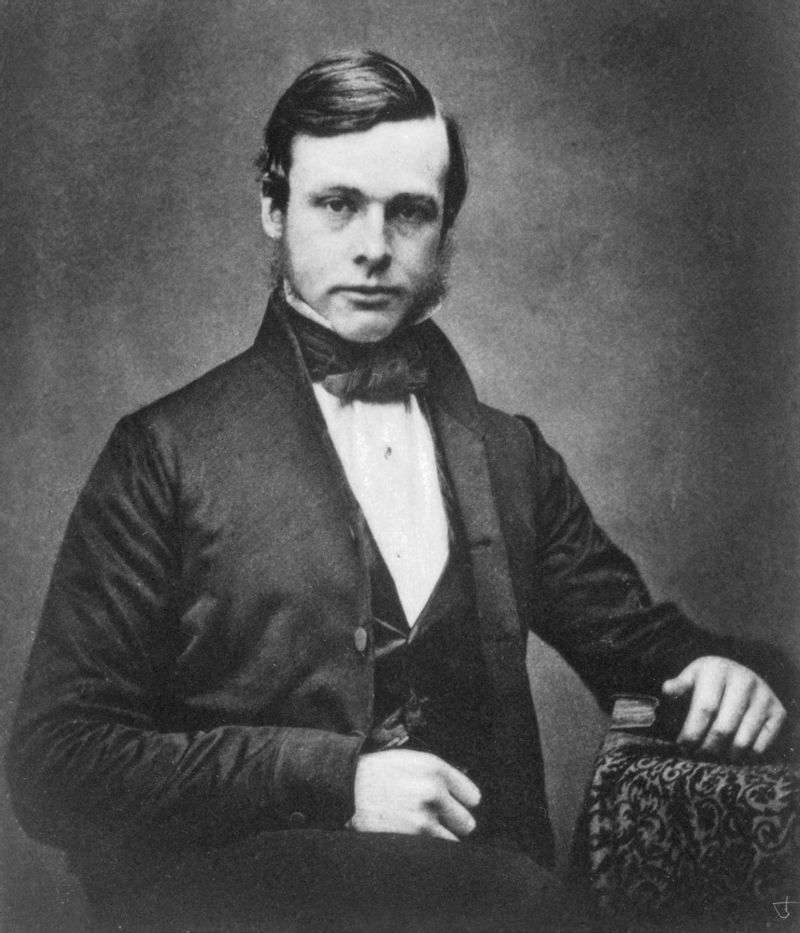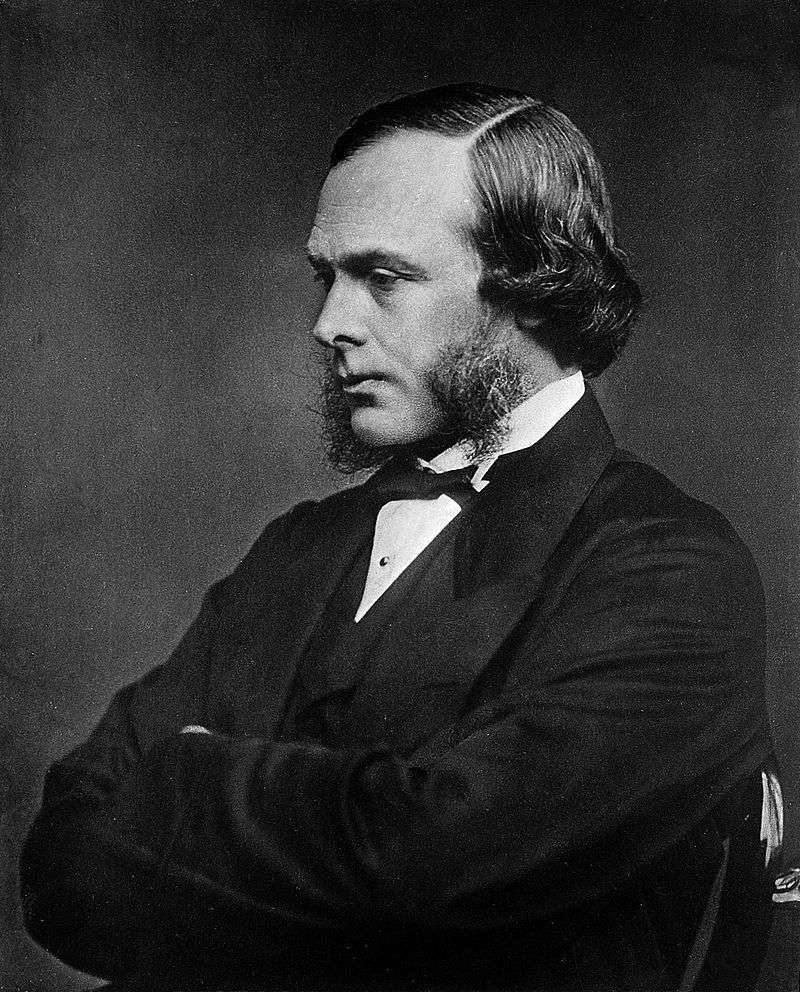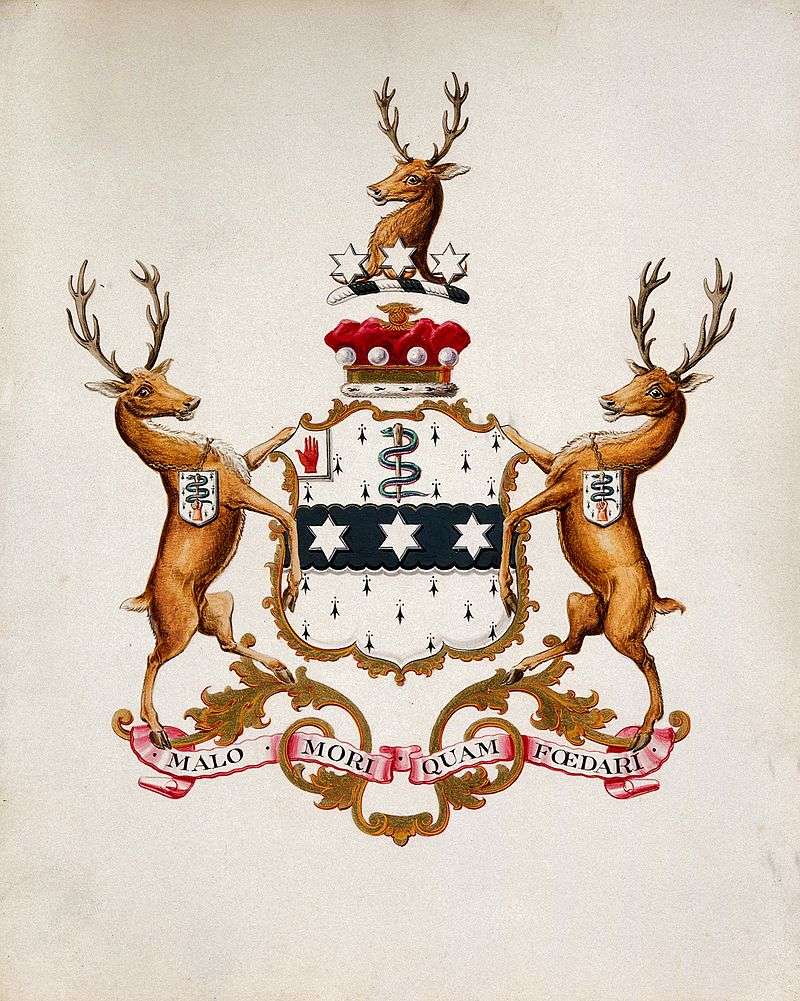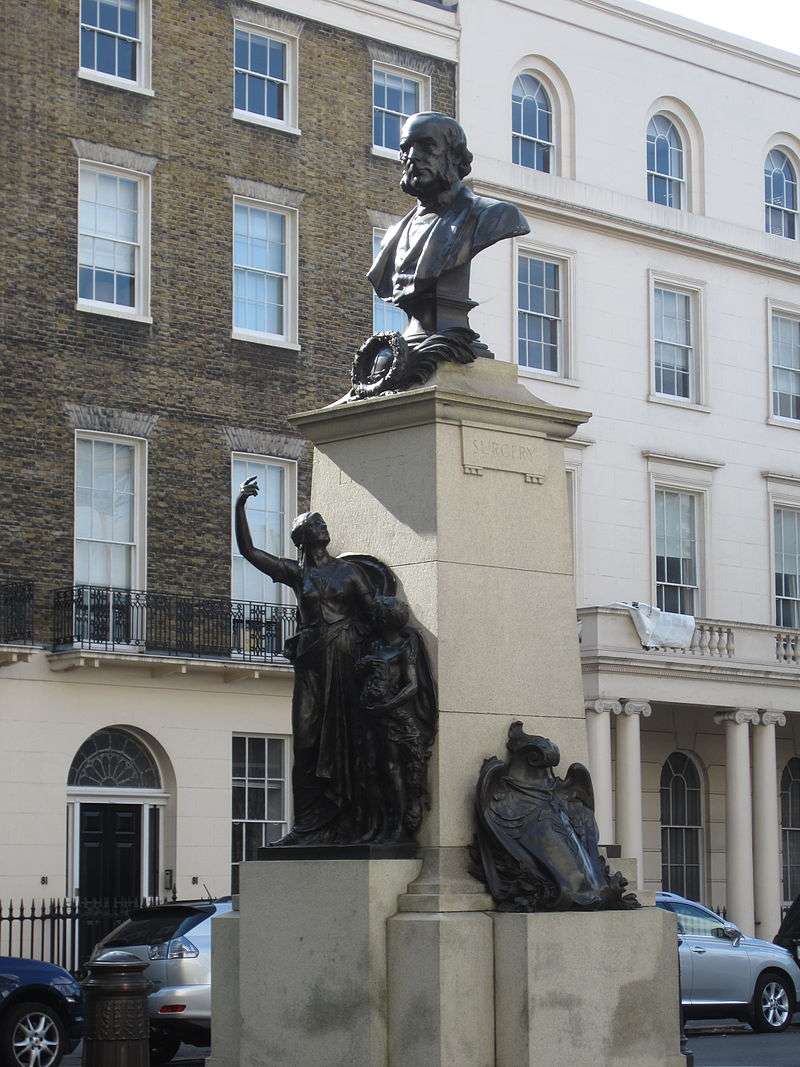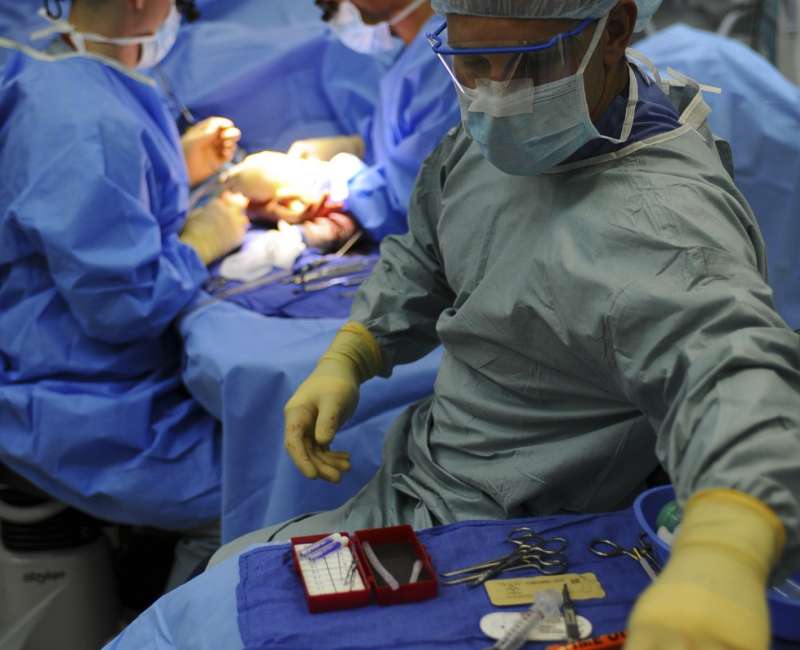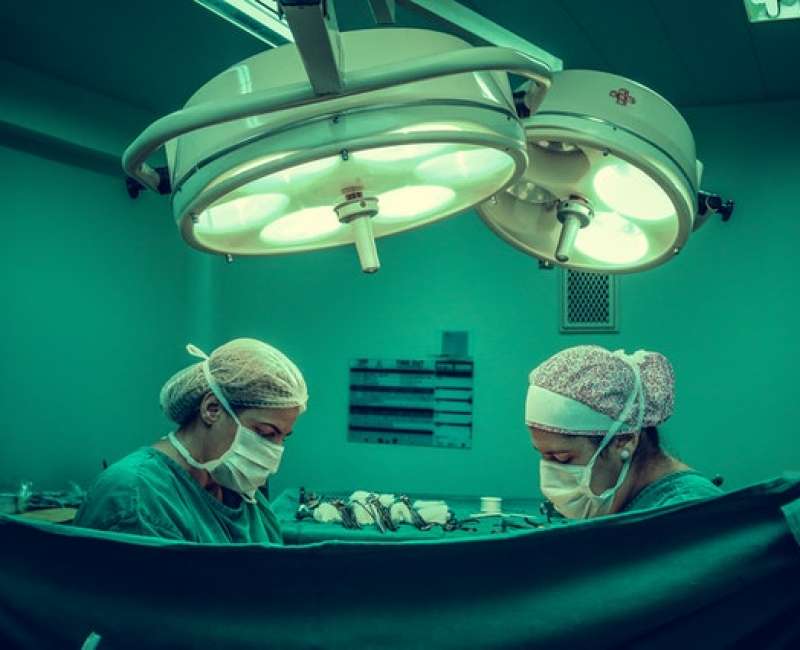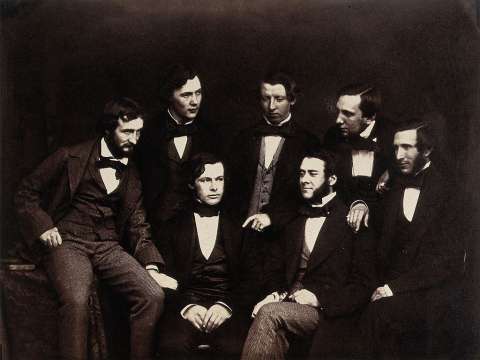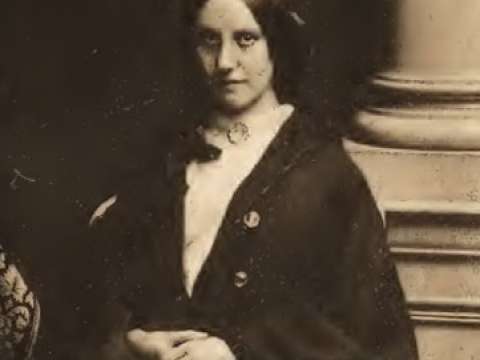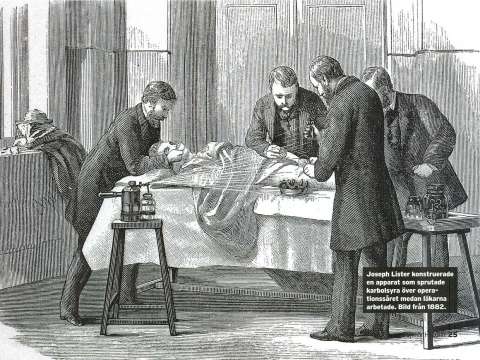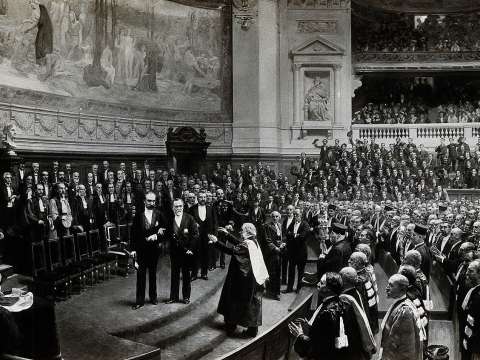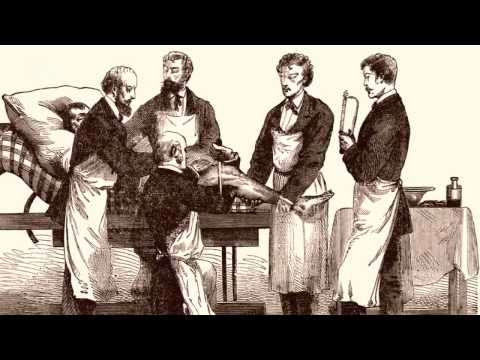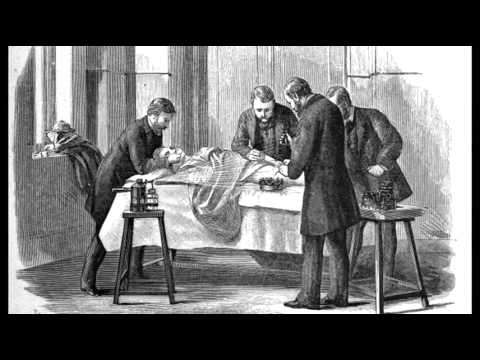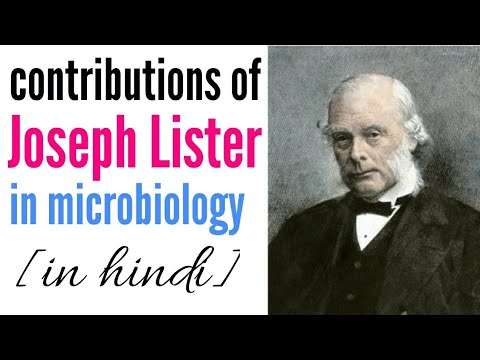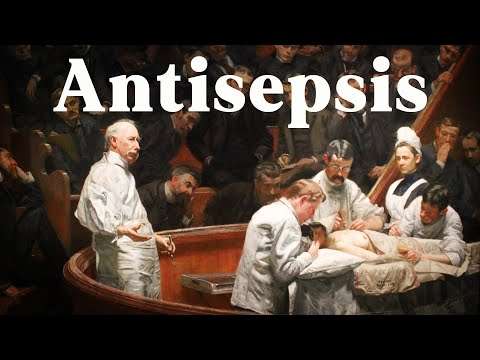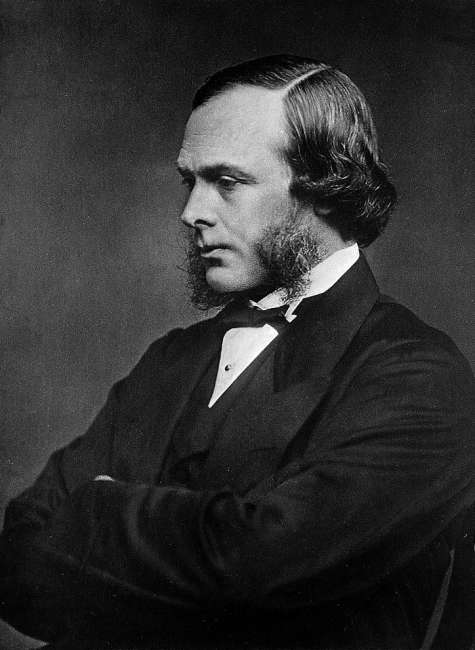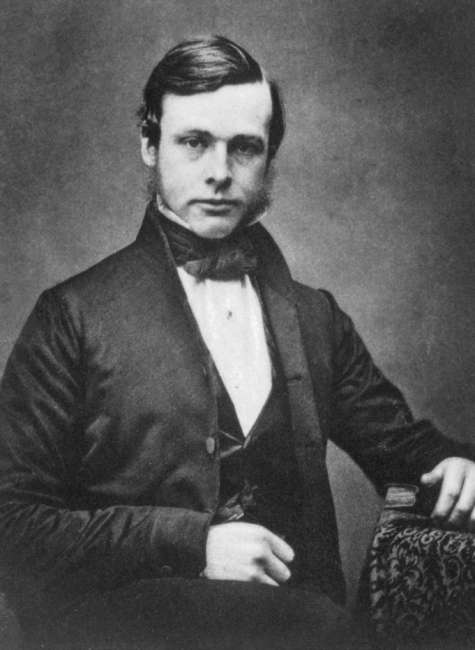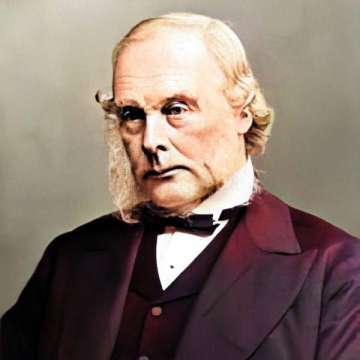

Joseph Lister (1827-1912)

I trust I may be enabled in the treatment of patients always to act with a single eye to their good.
Joseph Lister, 1st Baron Lister, was a British surgeon and a pioneer of antiseptic surgery. From a technical viewpoint, Lister was not an exceptional surgeon, but his research into bacteriology and infection in wounds raised his operative technique to a new plane where his observations, deductions and practices revolutionised surgery throughout the world.
Lister promoted the idea of sterile surgery while working at the Glasgow Royal Infirmary. Lister successfully introduced carbolic acid now known as phenol to sterilise surgical instruments and to clean wounds.
Applying Louis Pasteur's advances in microbiology, Lister championed the use of carbolic acid as an antiseptic, so that it became the first widely used antiseptic in surgery. He first suspected it would prove an adequate disinfectant because it was used to ease the stench from fields irrigated with sewage waste. He presumed it was safe because fields treated with carbolic acid produced no apparent ill-effects on the livestock that later grazed upon them.
Lister's work led to a reduction in post-operative infections and made surgery safer for patients, distinguishing him as the "father of modern surgery".
Early life
Lister was born to a prosperous Quaker family in the village of Upton, West Ham, Essex, then near but now in London, England. He was the second son of six siblings to gentleman scientist and port wine merchant Joseph Jackson Lister who was in partnership with Thomas Barton Beck, of Tokenhouse Yard, the grandfather of Marcus Beck. Lister's mother was Isabella, youngest daughter of master mariner Anthony Harris. Before she was married, Isabella worked at the Ackworth School, a Quaker school for the poor, assisting her widowed mother who was the superintendent of the school.

His father was a pioneer in the design of achromatic object lenses for use in compound microscopes; he spent 30 years perfecting the microscope, and in the process, discovered the Law of Aplanatic Foci, building a microscope where the image point of one lens coincided with the focal point of another. Up until that point, the best higher magnification lenses produced an excessive secondary aberration known as a coma which interfered with normal use. His work built a reputation sufficient to enable his being elected to the Royal Society in 1832.
Education
A young Joseph Lister attended Benjamin Abbott's Isaac Brown Academy, a private, Quaker school in Hitchin in Hertfordshire. When Lister was older he attended Grove House School in Tottenham, also a private Quaker School, studying mathematics, natural science, and languages. His father was insistent that Lister received a good grounding in French and German, in the knowledge he would learn Latin. From an early age, Lister became interested in natural history that led to dissections of small animals and fish, that were examined using his fathers microscope and then be drawn using the Camera lucida technique, that his father had taught him or sketched. His fathers interests in microscopical research, developed in Lister, the determination to become a surgeon.
Lister left school in the spring of 1844 when he was seventeen. He was unable to attend either Oxford or the University of Cambridge owing to the religious tests that effectively barred him. Lister decided to attend the non-sectarian UCL Medical School, one of only a few institutions which accepted Quakers at that time. He initially studied arts, graduating with a Bachelor of Arts degree with honours in classics and botany in 1847. While he was studying, Lister suffered from a bout of smallpox, followed by a nervous breakdown. He decided to take a long holiday in Ireland, to recuperate and this delayed the start of his medical studies at the university.
In October 1848, Lister registered as a medical student. During his studies, Lister was active in the University Debating Society and the Hospital Medical Society. His main teachers were John Lindley, Thomas Graham, Robert Edmond Grant, George Viner Ellis and William Benjamin Carpenter but although Lister often spoke about Lindley and Graham in his writings, it was Wharton Jones and William Sharpey who exercised the greatest influence on Lister. As part of his studies, Lister trained first as an intern and then house physician to Walter Hayle Walshe and then 1851, house surgeon to John Eric Erichsen.

He graduated with honours as Bachelor of Medicine in 1852. Lister wrote his first paper in 1853, Observations on the Contractile Tissue of the Iris that advanced the work of Albert von Kölliker, demonstrating the existence of two distinct muscles, the dilator and sphincter in the Iris. It was published in Quarterly Journal of Microscopical Science. His next paper was a similar work Observations on the Muscular Tissue of the Skin. More than 30 of his early school papers are still preserved.
In the same year, Lister passed the examination for fellowship of the Royal College of Surgeons, bringing to a close nine years of education. With his medical education completed, Sharpey advised Lister to spend a month at the medical practice of James Syme in Edinburgh and then visit the medical schools in Europe, for a longer period. However, Lister who anxious about his first appointment, decided to settle in Edinburgh for some time, after meeting Syme.
Edinburgh
Lister moved there in September 1853, to work as an assistant to James Syme at the University of Edinburgh and the Edinburgh Royal Infirmary. On his first meeting with Syme, Lister was invited to his house Millbank in Morningside, where he met, amongst others, Agnes Syme, who was Syme daughter by another marriage. While Lister thought that Agnes was not conventionally pretty, he did admire her quickness of mind, her familiarity with medical practice and her warmth. Lister became a frequent visitor to Millbank and met a much wider group of eminent people than he would in the restricted group he would have been part of in London. By October 1953, Lister decided to spend the winter in Edinburgh and a month later he became Syme's supernumerary house surgeon, a position where he assisted Syme during every operation and took notes. The position was much coveted. During this period, Lister presented a paper on the structure of a cancellous exostoses that had been removed by Syme at the Royal Edinburgh Medico-Chirurgical Society, demonstrating that the method of ossification of these growths was the same as that which occurs in the epiphyseal cartilage.

In October 1855, Lister was appointed a lecturer after the death of Richard James Mackenzie. Mackenzie a noted infirmary surgeon and surgical lecturer at the Edinburgh Extra-mural School had contracted cholera in Balbec in Scutari, while on a 4 month volunteer stint as Field Surgeon to the 79th Highlanders in the Crimean War. It was assumed that Mackenzie would take eventually take Syme's position. Lister decided to take advantage of the situation offered by Syme and decided to settle in Edinburgh, renting a lecture room at 4 High School Yards and new rooms at 3 Rutland Square for living
Marriage
During that time, when a Quaker married a person of another denomination, it would be considered as marrying out of the society. After sending a letter to his parents, Lister made up his mind and subsequently left the Quakers and later joined the Saint Paul's Episcopal Church, in Jeffrey Street, Edinburgh. On the 23 April 1856, Lister married Agnes Syme, in the drawing room of Millbank, Syme's house in Morningside. Only the Syme family were present.
On their honeymoon, the couple spent three months visiting leading medical institutes in France and Germany. By this time, Agnes was enamoured of medical research and was Lister's partner in the laboratory for the rest of her life.
Lecturing
On the 7th November 1855, Lister gave his first lecture on the Principles and Practice of Surgery in a lecture theatre at 4 High School Yards. His first lecture was read from twenty-one pages of Foolscap folio. Lister's first lectures were based on notes, either read or spoken, but over time he used them less and less.
Physiological experiments
While he was in Edinburgh, Lister conducted a series of physiological experiments between the years 1853 and 1859. His approach was rigorous and meticulous in both measurement and description. Lister was clearly aware of the latest advances of physiological research in France, Germany, and other European countries and maintained an on-going discussion of his observations and results with other leading physicians in his peer group including Albert von Kölliker, Wilhelm von Wittich, Theodor Schwann and Rudolf Virchow and ensured he correctly cited their work.
These series of experiments resulted in the publication of 11 papers between 1857 and 1859. They included the study of the nervous control of arteries, the earliest stages of inflammation, the structure of nerve fibres and the study of the nervous control of the gut with reference to sympathetic nerves. Indeed, he continued the experiments for three years, until he was appointed Regius Professor of Systematic Surgery at the University of Glasgow. Throughout his life, Lister believed that the papers on microscopy and physiology of inflammation that he read to the Royal Society in 1857, were his most important.
Lister wrote his first paper in 1853, Observations on the Contractile Tissue of the Iris that advanced the work of Albert von Kölliker, demonstrating the existence of two distinct muscles, the dilator and sphincter in the Iris, that corrected the convictions of previous researchers that there was no dilator pupillae muscle. It was published in Quarterly Journal of Microscopical Science. His next paper was a similar work Observations on the Muscular Tissue of the Skin, published on 1 June 1853 in the same journal. Lister was able to confirm Kölliker studies that in humans the smooth muscle fibres are responsible for the erectile function of hair, in contrast to other mammals in which large tactile hairs are associated with striated muscle. Lister's microscopy skills were so advanced that he was able to correct the observations of the German histologist, Friedrich Gustav Henle for mistaking the small blood vessels for muscle fibres.

In a letter that Lister wrote on 16 December 1855, he records the beginning of his research to trace the process of inflammation. He describes an experiment on the artery of a frog viewed under his microscope, which was the subject of water droplet of different temperatures, to determine the early stage of inflammation. He initially applied a water droplet at 80 °F which caused the artery to contract for a second and the flow ceased, then dilated and the area turned red and the flow of blood increased. He progressively increased the temperature until it was 200 °F. The blood slowed down then coagulated. He continued the experiment on the wing of chloroformed bat to widen his research focus.
Lister's third paper, On the minute structure of involuntary muscle fibre, published in 1858 in the same journal, was read before the Royal Society of Edinburgh on 1 December 1856. It was research into the histology and function of the minute structures of involuntary muscle fibres.[9] The experiment was designed to confirm Kölliker's observations on the structure of individual fibres. Lister proved conclusively that the muscle fibres of blood vessels, described by Lister as slightly flattened elengated elements, were similar to those found in pig intestine, that Kölliker observed. His next paper On the flow of the lacteal fluid in the mesentery of the mouse was a short report, based on observations that he made in 1853. The paper published in 1858, also in the Quarterly Journal of Microscopical Science was an experminent by Lister to prove two goals, specifically to determine the character of the flow of chyle, in the lymphatics and secondary, to determine if the Lacteals in the Gastrointestinal wall could absorb solid matter, in the form of granules, from the lumen. For the first experiment a mouse fed beforehand on bread and milk was chloroformed, its abdomen opened and a length of intestine placed on glass under a microscope. Lister repeated the experiment several times and each time saw mesenteric lymph flowing in a steady stream, without visible contractions of the lymph vessels. For the second experiment Lister dyed some bread with Indigo and fed it to a mouse with the result that no indigo particles were ever seen in the chyle.
In 1858, Lister published 7 papers on physiological experiments he conducted on the origin and mechanism of inflammation.[9] Two of these papers were research into the nervous control of blood vessels, An Inquiry Regarding the Parts of the Nervous System Which Regulate the Contractions of the Arteries and the principal paper in the series On the Early Stages of Inflammation which extended the work of Wharton Jones. Both papers were read to the Royal Society of London on 18 June 1857.
Lister had come to the conclusion that accurate knowledge of the functioning of inflammation couldn't be obtained by researching the more advanced stages, that were subject to secondary processes. The paper was divided into four sections:
- The aggregation of red blood cells when removed from the body, i.e. which occurs during Coagulation.
- The structure and function of blood vessels.
- The effects of irritants on blood vessels, e.g. hot water.
- The effects of irritants on tissue.
Career
Before Lister's studies of surgery, many people believed that chemical damage from exposure to "bad air", or miasma, was responsible for infections in wounds. Hospital wards were occasionally aired out at midday as a precaution against the spread of infection via miasma, but facilities for washing hands or a patient's wounds were not available. A surgeon was not required to wash his hands before seeing a patient; in the absence of any theory of bacterial infection, such practices were not considered necessary. Despite the work of Ignaz Semmelweis and Oliver Wendell Holmes Sr., hospitals practised surgery under unsanitary conditions. Surgeons of the time referred to the "good old surgical stink" and took pride in the stains on their unwashed operating gowns as a display of their experience.
While he was a professor of surgery at the University of Glasgow, Lister became aware of a paper published by the French chemist, Louis Pasteur, showing that food spoilage could occur under anaerobic conditions if micro-organisms were present. Pasteur suggested three methods to eliminate the micro-organisms responsible: filtration, exposure to heat, or exposure to solution/chemical solutions. Lister confirmed Pasteur's conclusions with his own experiments and decided to use his findings to develop antiseptic techniques for wounds. As the first two methods suggested by Pasteur were unsuitable for the treatment of human tissue, Lister experimented with the third idea.
In 1834, Friedlieb Ferdinand Runge discovered phenol, also known as carbolic acid, which he derived in an impure form from coal tar. At that time, there was uncertainty between the substance of creosote – a chemical that had been used to treat wood used for railway ties and ships since it protected the wood from rotting – and carbolic acid. Upon hearing that creosote had been used for treating sewage, Lister began to test the efficacy of carbolic acid when applied directly to wounds.

Therefore, Lister tested the results of spraying instruments, the surgical incisions, and dressings with a solution of carbolic acid. Lister found that the solution swabbed on wounds remarkably reduced the incidence of gangrene. In the spring of 1865, Lister read about Louis Pasteur discovery of living things causing fermentation and putrefaction in the magazine Comptes rendus hebdomadaires of the French Academy of Sciences, that was given to him by his friend, the chemist Thomas Anderson.
In August 1865, Lister applied a piece of lint dipped in carbolic acid solution onto the wound of a seven-year-old boy at Glasgow Royal Infirmary, who had sustained a compound fracture after a cart wheel had passed over his leg. After four days, he renewed the pad and discovered that no infection had developed, and after a total of six weeks he was amazed to discover that the boy's bones had fused back together, without suppuration. He subsequently published his results in The Lancet in a series of six articles, running from March through July 1867.
He instructed surgeons under his responsibility to wear clean gloves and wash their hands before and after operations with 5% carbolic acid solutions. Instruments were also washed in the same solution and assistants sprayed the solution in the operating theatre. One of his additional suggestions was to stop using porous natural materials in manufacturing the handles of medical instruments.

Lister left Glasgow University in 1869 and was succeeded by George Husband Baird MacLeod. Lister then returned to Edinburgh as successor to Syme as Professor of Surgery at the University of Edinburgh and continued to develop improved methods of antisepsis and asepsis. Amongst those he worked with there, who helped him and his work, was the senior apothecary and later MD, Alexander Gunn. Lister's fame had spread by then, and audiences of 400 often came to hear him lecture. As the germ theory of disease became more understood, it was realised that infection could be better avoided by preventing bacteria from getting into wounds in the first place. This led to the rise of aseptic surgery. On the hundredth anniversary of his death, in 2012, Lister was considered by most in the medical field as "The Father of Modern Surgery".
Diffusion of Listerism
Although Lister was so roundly honoured in later life, his ideas about the transmission of infection and the use of antiseptics were widely criticised in his early career. In 1869, at the meetings of the British Association at Leeds, Lister's ideas were mocked; and again, in 1873, the medical journal The Lancet warned the entire medical profession against his progressive ideas. However, Lister did have some supporters including Marcus Beck, a consultant surgeon at University College Hospital, who not only practiced Lister's antiseptic technique, but included it in the next edition of one of the main surgical textbooks of the time.
Lister's use of carbolic acid proved problematic, and he eventually repudiated it for superior methods. The spray irritated eyes and respiratory tracts, and the soaked bandages were suspected of damaging tissue, so his teachings and methods were not always adopted in their entirety. Because his ideas were based on germ theory, which was in its infancy, their adoption was slow. General criticism of his methods was exacerbated by the fact that he found it hard to express himself adequately in writing, so they seemed complicated, unorganised, and impractical.
Surgical technique
On 10 February 1877, Scottish surgeon, Sir William Fergusson Chair of Systematic Surgery at King's College Hospital, died.[72] On 18 February, in reply to a proposal from Kings, Lister stated that he would be willing to accept the Chair, on the condition that he could radically reform the teaching there.
In a private letter, Lister stated in no uncertain terms his opinion of Ferguson, The mere fact of Fergusson having held the clinical chair is surely a matter of no great moment.

In 1877, Lister moved from Edinburgh to King's College Hospital, in London to replace Sir William Fergusson. He was elected President of the Clinical Society of London. He also developed a method of repairing kneecaps with metal wire and improved the technique of mastectomy. He was also known for being the first surgeon to use catgut ligatures, sutures, and rubber drains, and developing an aortic tourniquet. He also introduced a diluted spray of carbolic acid combined with its surgical use, however he abandoned the carbolic acid sprays in the late 1890s after he saw it provided no beneficial change in the outcomes of the surgeries performed with the carbolic acid spray. The only reported reactions were minor symptoms that did not affect the surgical outcome as a whole, like coughing, irritation of the eye, and minor tissue damage among his patients who were exposed to the carbolic acid sprays during the surgery.
Later life
In 1893, four days in their spring holiday in Rapallo, Italy, Lady Agnes Lister died from acute pneumonia.
Lister retired from practice. Studying and writing lost appeal for him and he sank into religious melancholy. Despite suffering a stroke, he still came into the public light from time to time. He had for several years been a Surgeon Extraordinary to Queen Victoria, and from March 1900 was appointed the Serjeant Surgeon to the Queen, thus becoming the senior surgeon in the Medical Household of the Royal Household of the sovereign. After her death the following year, he was re-appointed as such to her successor, King Edward VII. On 24 August 1902, the King came down with appendicitis two days before his scheduled coronation. Like all internal surgery at the time, the appendectomy needed by the King still posed an extremely high risk of death by post-operational infection, and surgeons did not dare operate without consulting Britain's leading surgical authority. Lister obligingly advised them in the latest antiseptic surgical methods which they followed to the letter, and the King survived, later telling Lister, "I know that if it had not been for you and your work, I wouldn't be sitting here today."
Death
Lister died on 10 February 1912 at his country home in Walmer, Kent at the age of 84. After a large public funeral service at Westminster Abbey, his body was buried at Hampstead Cemetery in London in a plot to the south-east of central chapel. In the north transept of Westminster Abbey, there is a marble medallion of Lister that sits alongside four other noted men of science, Darwin, Stokes, Adams, and Watt.
Awards and honours
In 1877, Lister was awarded the Cothenius Medal of the German Society of Naturalists.
In 1883 Queen Victoria created him a Baronet, of Park Crescent in the Parish of St Marylebone in the County of Middlesex. In 1897 he was further honoured when Her Majesty raised him to the peerage as Baron Lister, of Lyme Regis in the County of Dorset. In the 1902 Coronation Honours list published on 26 June 1902 the original day of King Edward VII's coronation, Lord Lister was appointed a Privy Counsellor and one of the original members of the new Order of Merit OM. He received the order from the King on 8 August 1902, and was sworn a member of the council at Buckingham Palace on 11 August 1902.
In 1885 he was awarded the Prussian Pour le Mérite, their highest order of merit. The order was restricted to 30 living Germans and same of foreigners. In May 1890, Lister was awarded the Cameron Prize for Therapeutics of the University of Edinburgh, that included the delivery of a short oration or lecture, that was held at the Synod Hall in Edinburgh. In December 1902, the King of Denmark bestowed upon Lister the Knight of the Grand Cross of the Order of the Dannebrog, an honour that gave him more pleasure than any of his later honours.
Academic societies
Lister was a member of the Royal College of Surgeons of England between 1880 and 1888. In 1886, he was elected Vice President of the college, but declined the nomination for office of president. In 1887, Lister presented the Bradshaw lecture with a lecture titled: On the Present Position of Antiseptic Treatment in Surgery. In 1897, Lister was awarded the College Gold Medal, their highest honour.
Lister was elected to the Royal Society in 1860. In 1863, Lister presented the Croonian lecture at the society, on On the coagulation of the blood..
He served as a trustee on the Royal Society council between 1881 and 1883. Ten years later, in November 1893 Lister was elected for two years, to the position of foreign secretary of the society, succeeding the Scottish geologist Sir Archibald Geikie. In 1895 he was elected president of the Royal Society succeeding Lord Kelvin. He held the position until 1900.

In March 1893, Lister received a telegram from Pasteur, Félix Guyon and Charles Bouchard that informed him he had been elected an associate of the Academie des Sciences.
Following his death, the Lord Lister Memorial Fund, a public subscription to raise monies for the public good in honour of Lord Lister.
It led to the founding of the Lister Medal, seen as the most prestigious prize that could be awarded to a surgeon.
Monuments
Lister is one of the two surgeons in the United Kingdom who have the honour of having a public monument in London. Lister's stands in Portland Place; the other surgeon is John Hunter. There is a statue of Lister in Kelvingrove Park, Glasgow, celebrating his links with the city. In 1903, the British Institute of Preventive Medicine was renamed Lister Institute of Preventive Medicine in honour of Lister. The building, along with another adjacent building, forms what is now the Lister Hospital in Chelsea, which opened in 1985. In 2000, it became part of the HCA group of hospitals.
A building at Glasgow Royal Infirmary which houses cytopathology, microbiology and pathology departments was named in Lister's honour to recognise his work at the hospital. Lister Hospital in Stevenage, Hertfordshire is named after him. The Discovery Expedition of 1901–04 named the highest point in the Royal Society Range, Antarctica, Mount Lister.
Lister's name is one of twenty-three names featured on the Frieze of the London School of Hygiene & Tropical Medicine – although the committee which chose the names to include on the frieze did not provide documentation about why certain names were chosen and others were not.

In 1879, Listerine antiseptic developed as a surgical antiseptic but nowadays best known as a mouthwash was named after Lister. Microorganisms named in his honour include the pathogenic bacterial genus Listeria named by J. H. H. Pirie, typified by the food-borne pathogen Listeria monocytogenes, as well as the slime mould genus Listerella, first described by Eduard Adolf Wilhelm Jahn in 1906. Lister is depicted in the Academy Award-winning 1936 film The Story of Louis Pasteur, by Halliwell Hobbes. In the film, Lister is one of the beleaguered microbiologist's most noted supporters in the otherwise largely hostile medical community, and is the key speaker in the ceremony in his honour.
Two postage stamps were issued in September 1965 to honour Lister for his pioneering work in antiseptic surgery.
Gallery
- Upton House that Lord Lister grew up in. The drawing was created by his older sister, Mary Joseph
- The Lord Lister Hotel in Hitchin, formerly Benjamin Abbott's Isaac Brown Academy, where Lister was a student from 1838 to 1841
- Lister Building located at the Glasgow Royal Infirmary
- Lister Room at the Royal College of Physicians and Surgeons of Glasgow, Scotland
- The Lister Frieze on the portico of the Polyclinic Umberto I hospital in Rome. The tympanum sculptures show Lister operating
- Lister's name on the London School of Hygiene & Tropical Medicine, in Keppel Street
- Coast House in Deal, with its blue plaque to Lister.
- Lister's hearse prior to his funeral service at Westminster Abbey, London
- Joseph Lister Memorial, London by Thomas Brock
- Plaque commemorating Joseph Lister on the facade of the polyclinic in Vienna
- Plaque at 12 Park Crescent, Regent's Park, London W1B 1PH
- Memorial to Lister, Portland Place, London
- Photogravure plaque at the Wellcome Institute, London
Literature
These are some of Listers most important papers:
- Lister, Joseph 31 December 1858. "XXXI. On the early stages of inflammations". Philosophical Transactions of the Royal Society of London. Royal Society. 148: 645–702. doi:10.1098/rstl.1858.0031. ISSN 0261-0523. S2CID 109093001.
- Lister, Joseph March 1867. "On a New Method of Treating Compound Fracture, Abscess, etc., with Observations on the Conditions of Suppuration". The Lancet. 89 2272: 326–329. doi:10.1016/S0140-67360251192-2.
- Lister, Joseph 21 September 1867. "On the Antiseptic Principle in the Practice of Surgery". BMJ. 2 351: 246–248. doi:10.1136/bmj.2.351.246. PMC 2310614. PMID 20744875.
- Pasteur, Louis 1863. "Recherches sur la putréfaction". Comptes rendus hebdomadaires des séances de l'Académie des sciences in French. French Academy of Sciences. 56: 1189–1194.
- Lister, J January 1870. "On the Effects of the Antiseptic System of Treatment Upon the Salubrity of a Surgical Hospital". The Lancet. 95 2418: 4–6. doi:10.1016/S0140-67360231273-X.
Two quarto volumes of the Listers collected papers:
- Baron Joseph, Lister; Cameron, Hector Clare 1909. The collected papers of Joseph Baron Lister. Vol. 2. Oxford: Oxford University Press, Hodder and Stoughton. OCLC 841851608. Archived from the original on 1909. Retrieved 25 August 2020.
- Baron Joseph, Lister; Cameron, Hector Clare 1909. The collected papers of Joseph Baron Lister. Vol. 1. Oxford: Oxford University Press, Hodder and Stoughton. OCLC 838259550. Archived from the original on 1909. Retrieved 25 August 2020.
More facts
Cameron Prize for Therapeutics of the University of Edinburgh (1890)
Albert Medal (1894)
Copley Medal (1902)
The Butchering Art (2017)

